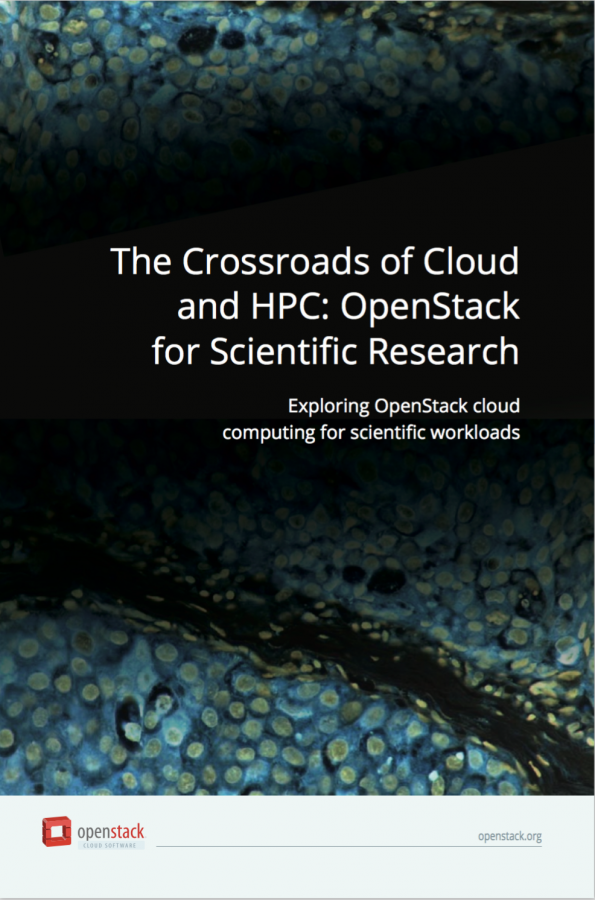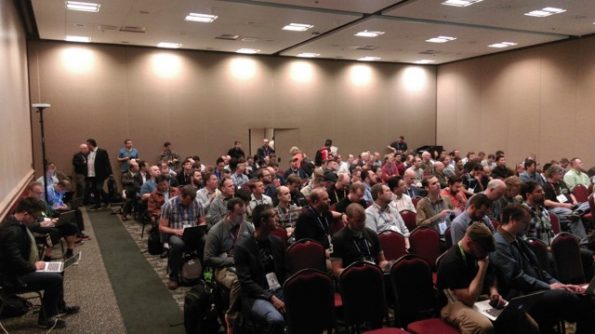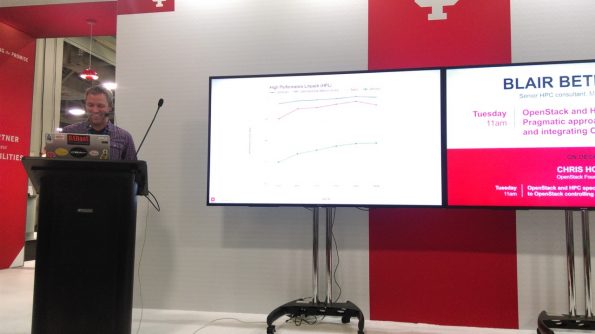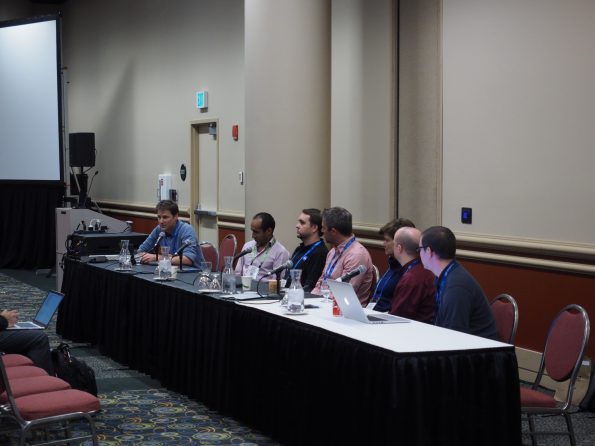Last week at Supercomputing 2016 there was a lot of activity around OpenStack. Working Group co-chair Blair Bethwaite put together a pick of the schedule’s OpenStack highlights, and used the event to launch the book edition of my OpenStack / high-performance computing (HPC) studies, featuring user stories and case studies from many prominent working group members.

In testament to the momentum building behind using OpenStack for research computing, the Scientific OpenStack birds of a feather (BoF) filled the room, and was even bigger than the scientific OpenStack BoF at the OpenStack Summit in Barcelona. Topics discussed included the trade-offs between virtualization and containers for scientific use cases and different strategies for finding performance on scientific OpenStack clouds.

One interesting observation came from a show of hands on who in the room was already using OpenStack – it turned out to be no more than a significant minority. OpenStack already feels like it has arrived with a bang in HPC, but there’s substantially more interest out there, and the clear implication is that even greater things are yet to come.

Earlier in the day, the Indiana University booth hosted a series of lightning talks, including from myself and several Scientific Working Group members. Bethwaite gave an excellent and informative talk on the recent studies he has done at Monash University on the overhead of virtualization.
OpenStack’s presence at the Supercomputing conference was wrapped up with a panel session featuring a great set of luminaries from the melting pot of OpenStack and research computing:
-
Bethwaite and Steve Quenette from Monash University in Melbourne, Australia
-
Jonathan Mills from NASA Goddard Space Flight Center
-
Kate Keahey from University of Chicago and Argonne National Laboratory
-
Mike Lowe from Indiana University
-
Robert Budden from Pittsburgh Supercomputer Center

I took the chair as moderator. With such a great panel it’s no surprise that many interesting points came up from the discussion, including OpenStack’s true capabilities for HPC, and the level of investment in (but the ultimate value of) self-supported OpenStack. There were also some insightful comments on a wish list for future OpenStack development.
Finally, we ended the conference with a working group dinner, confirming the trend that when it comes to socials, the Scientific Working Group is the team to beat!
The OpenStack Foundation also made a splash last week with the launch of the Scientific OpenStack landing page, which highlights the contributions of the Scientific Working Group (including a free digital download of the OpenStack/HPC book). The Scientific OpenStack landing page is also being promoted as the masthead banner graphic for the OpenStack home page. What an accolade!
This post first appeared on the StackHPC blog. Superuser is always interested in community content, email: [email protected].
- StackHPC at Vancouver OpenInfra Summit - October 8, 2023
- Meet the latest release of Kayobe: Even easier deployment of containerized OpenStack to bare metal - March 1, 2019
- How to upgrade to Pike using Kolla and Kayobe - September 29, 2017

)







